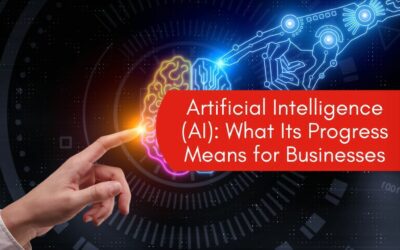AI is steadily making its way into enterprises, including changing the organization of IT services. New tools, tactics, and relationships between teams are emerging along the entire perimeter of the organization, from support service to data analytics.
As a source of potential transformational business impact, AI will become a priority for CIOs over the next five years. What’s more, many IT executives see AI as more than just a tool that empowers the business. Its impact is more fundamental, touching all operational functions of the enterprise from automating some legacy functions to greater engagement and new approaches from IT teams.
AI is already reshaping IT in a variety of ways.
1) IT BECOMES THE MAIN CONSUMER OF AI
IT support services have long used tools to automate traditional troubleshooting tasks and other processes, but now their popularity has grown significantly. This is not the only area of automation in IT with AI support. IT departments have fast evolved from collaborators to consumers of AI, employing it to secure and manage systems, allowing processes to be automated and businesses to move at the speed of AI.
2) SHADOW IT CAN EXPAND COVERAGE
In some cases, AI is causing IT activities to spread beyond the technology core. From self-service data analytics to enterprise-wide robotic process automation (RPA) and machine learning business models, the power of shadow IT functions in the enterprise spills over into new areas.
A research paper writer says the definition of “self-service” and “shadow IT,” as well as the conventional boundary between them, of course, depends on the culture of the particular company.
3) IT DATA SCIENTISTS WILL WORK MORE CLOSELY WITH IT
Some of the major corporate applications (e.g., CRM) that are powered by AI are largely automated, but there are other areas where the use of AI is becoming an obvious necessity. It will take a stronger collaboration between IT and data scientists to realize its full potential.
As companies prepare for large-scale AI and analytics applications, they need deeper access to systems, data, and applications that IT professionals are familiar with. Creating AI solutions requires close collaboration between data scientists and engineers. While these areas are deep in themselves, as the experiences of successful teams have shown, in many cases, they complement each other to create AI solutions.
4) IT AND DATA SCIENCE NEED COMMON TOOLS AND TACTICS
Partnerships between IT and data scientists involve sharing experiences so that teams can learn from each other’s technologies and methods. At the very least, on an introductory level, if not for expertise. Engineers must be able to interpret source code used to extract data from local sets, comprehend exploratory data analysis (EDA), develop features, and be fluent in algorithms such as Bayesian methods in order to obtain information and generate ideas. This knowledge is required to refactor and modulate the code so that it can then be used in corporate IT systems.
Conversely, data scientists need to learn how to take data through database connectors or APIs, store and process it in structured repositories, and write modular code that can be containerized for later use.
5) AI MANAGEMENT IS CENTRAL
Along with the activation of enterprises in the direction of automation of processes using AI, regulatory and reputational risks are increasing. Gartner points out the importance of developing policies to combat potential AI bias, discrimination, and other issues. It’s also a place where data and IT leaders may collaborate. Gartner suggests focusing on three areas:
- Trust in data sources and AI results
- Requirements for the transparency of data and algorithms
- A variety of data, algorithms, and viewpoints underpin the ethics and accuracy of AI




